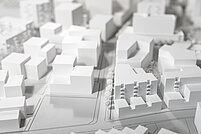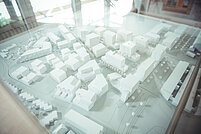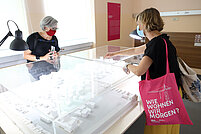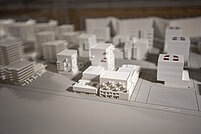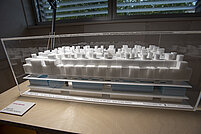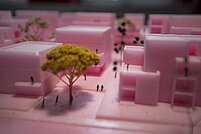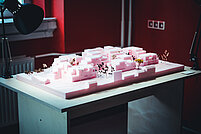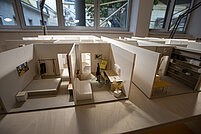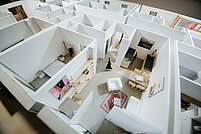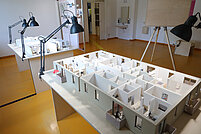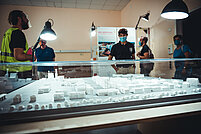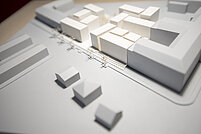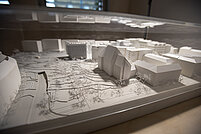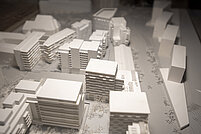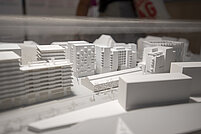HOW WILL WE LIVE TOMORROW? - AFFORDABILITY & NEW FORMS OF HOUSING
Exhibition tour part 3 of 5
"Housing is a human right." The growth of cities and the resulting rise in demand for housing are contributing to the fact that available building land and living space are becoming increasingly expensive. The principles of non-profit and subsidy systems in housing construction can counteract these price increases, and in doing so create long-term secure housing and rental conditions. Nevertheless, there is a constant need for new and innovative models and needs-based programs that respond to rapidly occurring social changes: in our family structures, our work situations and our social environments. Thus the notion of affordability cannot only be applied to housing. Rather, it is also a question of the affordability of everyday life, of makingends meet with the means available. Affordability of this kind is also linked to expenses for energy, mobility or social services. Hence, to create housing and new living environments for as many people as possible, many smart and sustainable initiatives must be supported and made visible.
Wolfganggasse
The Wolfganggasse urban development area is a prime example of a new social neighbourhood! On the 31,000m2 site around the former Wolfganggasse coach house, a new neighbourhood with approx. 850 subsidised flats is being built: special forms of housing for single parents, new municipal housing, shared flats for partially assisted living for people with disabilities and home places with socio-educational support, and much more.
Those who want to get a glimpse of the neighbourhood now can do so via VR. Just click here and walk through.
Loft-Flügel
The Loft-Flügel project is being built at the intersection of Taborstraße and Bruno-Marek-Allee. It is thus located at a prominent interface between urban and rural space. The project creates affordable, socially sustainable and inclusive living and working spaces in a densely built-up urban area.
Die Hauswirtschaft
The building community die Hauswirtschaft sees itself as a spatial enterprise that realises a building and roof enterprise oriented towards the common good in a participatory process. The focus is on the close connection between working and living.
Home 21
HOME 21 formulates an affordable housing offer for target groups that could hardly or only with difficulty be provided for in subsidised new housing construction so far.
Podhagskygasse
In Podhagskygasse, temporary and low-cost living space is made available in areas that are currently not intended for this purpose but can be used. This is made possible by a sophisticated modular system.
Further exhibition elements
Audio-Stories
Stories were recorded for all IBA neighbourhoods as part of the Interim Presentation. Please note, the audio-stories are in German only.
Architectural models
Architectural models play an essential role in the planning process, as they make ideas and concepts visible and tangible. In the exhibition "How will we live tomorrow?" the models were therefore an important building block to enable a holistic view of the project.
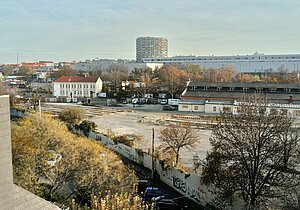

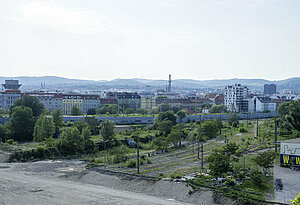

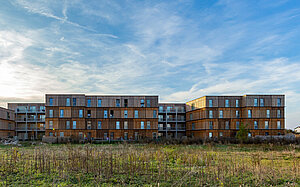
![[Translate to English:] Drohnenflug (c) IBA_Wien/ J. Stehno](/fileadmin/_processed_/2/7/csm_IMG_20200507_103126_8de9e6e6fb.jpg)
![[Translate to English:] Audio (c) IBA_Wien/ L. Schedl](/fileadmin/_processed_/f/b/csm_004_20200904__c_Schedl_IBA_3ca519ed54.jpg)
![[Translate to English:] Postkarten (c) IBA_Wien/ L. Schedl](/fileadmin/_processed_/0/2/csm_20200908-_DSC0798-_Wohnpartner_02a63864a3.jpg)
